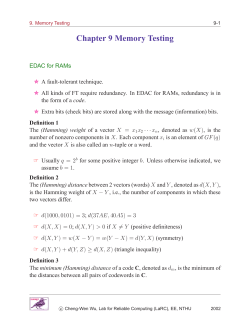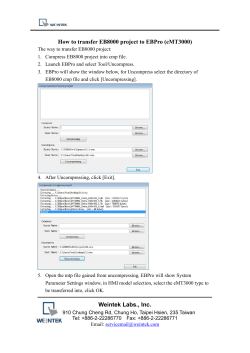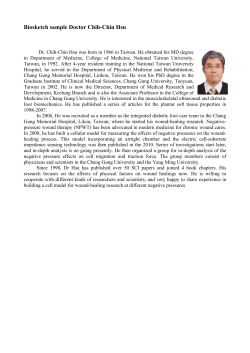
Sample Canonical Variables and Canonical Correlations ¾ Data:
p. 7-9 • Sample Canonical Variables and Canonical Correlations ¾ Data: ¾ Finding canonical variables and canonical correlations replace population distribution by empirical distribution replace Σ by S (or Sn) replay ρ by R then, the rests the same as above ¾ NTHU STAT 5191, 2010, Lecture Notes made by S.-W. Cheng (NTHU, Taiwan) • Additional Sample Descriptive Measures ¾ Matrices of Errors of Approximations p. 7-10 p. 7-11 the matrices of error of approximation are The approximation error matrices may be interpreted as descriptive summaries of how well the first r sample canonical variates reproduce the sample covariance matrices. Patterns of large entries in the rows and/or columns of the error matrices indicate a poor “fit” to the corresponding variables NTHU STAT 5191, 2010, Lecture Notes made by S.-W. Cheng (NTHU, Taiwan) p. 7-12 ordinarily, the first r variates do a better job of reproducing the elements of S12 than the elements of S11 or S22 (Q: Why?) ¾ Proportions of Explained Sample Variance so, p. 7-13 the contribution of the first r canonical variates to the total sample variance: proportions of total sample variances explained by 1st r canonical variates: they provide some indication of how well the canonical variates represent their respective sets NTHU STAT 5191, 2010, Lecture Notes made by S.-W. Cheng (NTHU, Taiwan) p. 7-14 they also provide single-number descriptions of the matrices of errors, because • Large Sample Inferences ¾ Note: Σ12=0 ⇒ no point in pursuing a CCA. ⇒ Q: how to test H0: Σ12=0? ¾ ¾ when n is large, under H0, the likelihood ratio test statistic is approximately distributed as a chi-square random variable with pq d.f. ¾ Bartlett (1939) suggests ¾ Q: What if H0: Σ12=0 is rejected? Next step? the issue of multiple testing should be taken into consideration Reading: Reference, 10.4, 10.5, 10.6 NTHU STAT 5191, 2010, Lecture Notes made by S.-W. Cheng (NTHU, Taiwan) p. 7-15
© Copyright 2025


















